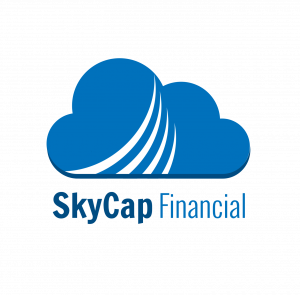Table of Contents
- Introduction
- Certified Cheque
- What Is a Bank Draft?
- Bank Draft vs Certified Cheque
- Benefits and Considerations
- Frequently Asked Questions
- Conclusion
Introduction
When dealing with large sums of money or transactions that require guaranteed funds, it is essential to understand the different payment methods available. Two of the most common guaranteed payment methods in Canada are certified cheques and bank drafts. This article will explore what certified cheques and bank drafts are, how they work, and the differences between them, helping you make an informed decision for your financial needs. For more information on paying by cheque in Canada, visit the official Canadian government site here.
Certified Cheque
A certified cheque is a type of cheque that is guaranteed by the issuing bank. When a cheque is certified, the bank verifies that the account holder has sufficient funds to cover the amount written on the cheque and places a hold on those funds. The cheque is then stamped or marked as certified, providing assurance to the recipient that the funds are available and that the cheque will not bounce.
Certified cheques are often used for transactions involving large sums of money, such as purchasing a car or making a down payment on a home. They are a secure form of payment, as the bank guarantees the availability of the funds, reducing the risk of the cheque being returned due to insufficient funds. Certified cheques are used across Canadian provinces, including Ontario, British Columbia, and Alberta, where property purchases and other large transactions often require guaranteed funds.
What Is a Bank Draft?
A bank draft, also known as a cashier’s cheque, is a payment instrument issued by a bank on behalf of a customer. When a bank draft is requested, the bank withdraws the specified amount from the customer’s account and holds the funds until the draft is presented for payment. The bank draft is then issued in the name of the recipient, providing a guarantee that the funds are available.
Bank drafts are commonly used for high-value transactions, such as real estate purchases, where the recipient requires a guaranteed form of payment. Since the funds are held by the bank, bank drafts are considered a secure and reliable method of payment, similar to certified cheques. Bank drafts are often required in transactions across Canadian provinces such as Quebec and Manitoba, where buyers and sellers need an added level of security in large purchases.
Bank Draft vs Certified Cheque
While both certified cheques and bank drafts are guaranteed forms of payment, there are some key differences between the two:
- Issuance: A certified cheque is a personal cheque that has been verified and guaranteed by the bank, while a bank draft is issued directly by the bank on behalf of the customer.
- Funds Hold: With a certified cheque, the bank places a hold on the account holder’s funds to guarantee payment. In contrast, with a bank draft, the bank withdraws the funds from the customer’s account and holds them until the draft is presented for payment.
- Security: Both certified cheques and bank drafts offer a high level of security, but bank drafts are generally considered to be slightly more secure since the funds are held by the bank rather than in the customer’s account.
Benefits and Considerations
When deciding between a certified cheque and a bank draft, it is important to consider the following benefits and potential drawbacks:
- Guaranteed Funds: Both certified cheques and bank drafts provide a guarantee that the funds are available, making them ideal for large transactions where the recipient requires assurance of payment.
- Security: Both payment methods offer a high level of security, reducing the risk of fraud or insufficient funds. However, bank drafts may be considered slightly more secure since the funds are held by the bank.
- Convenience: Certified cheques can be obtained by visiting your bank and requesting certification of a personal cheque, while bank drafts require the bank to issue the draft directly. The process for obtaining a bank draft may be more straightforward for some customers.
- Fees: Both certified cheques and bank drafts may come with fees, depending on the bank’s policies. It is important to inquire about any associated costs before choosing a payment method. Fees can vary across Canadian banks, including those in Nova Scotia and Saskatchewan.
Frequently Asked Questions
What is the main difference between a certified cheque and a bank draft?
The main difference is that a certified cheque is a personal cheque that has been verified and guaranteed by the bank, while a bank draft is issued directly by the bank on behalf of the customer. Both provide guaranteed funds, but the process of obtaining them differs.
Which is more secure, a certified cheque or a bank draft?
Both certified cheques and bank drafts are secure forms of payment. However, bank drafts are generally considered slightly more secure because the funds are held by the bank rather than remaining in the customer’s account.
Can I cancel a certified cheque or a bank draft?
In most cases, it is difficult to cancel a certified cheque or a bank draft once it has been issued, as the funds are guaranteed. If you need to cancel either, you should contact your bank immediately to determine if cancellation is possible and what steps need to be taken.
Conclusion
Certified cheques and bank drafts are both reliable and secure methods of payment, commonly used for large transactions where guaranteed funds are required. While both offer similar benefits, there are key differences in how they are issued and the level of security they provide. Understanding these differences can help you choose the right payment method for your needs and ensure that your transactions are completed smoothly and securely. Whether you are in Ontario, British Columbia, or Quebec, these payment methods offer valuable security for high-value transactions. If you are considering a loan to support your financial goals, visit SkyCap Financial for more information.






